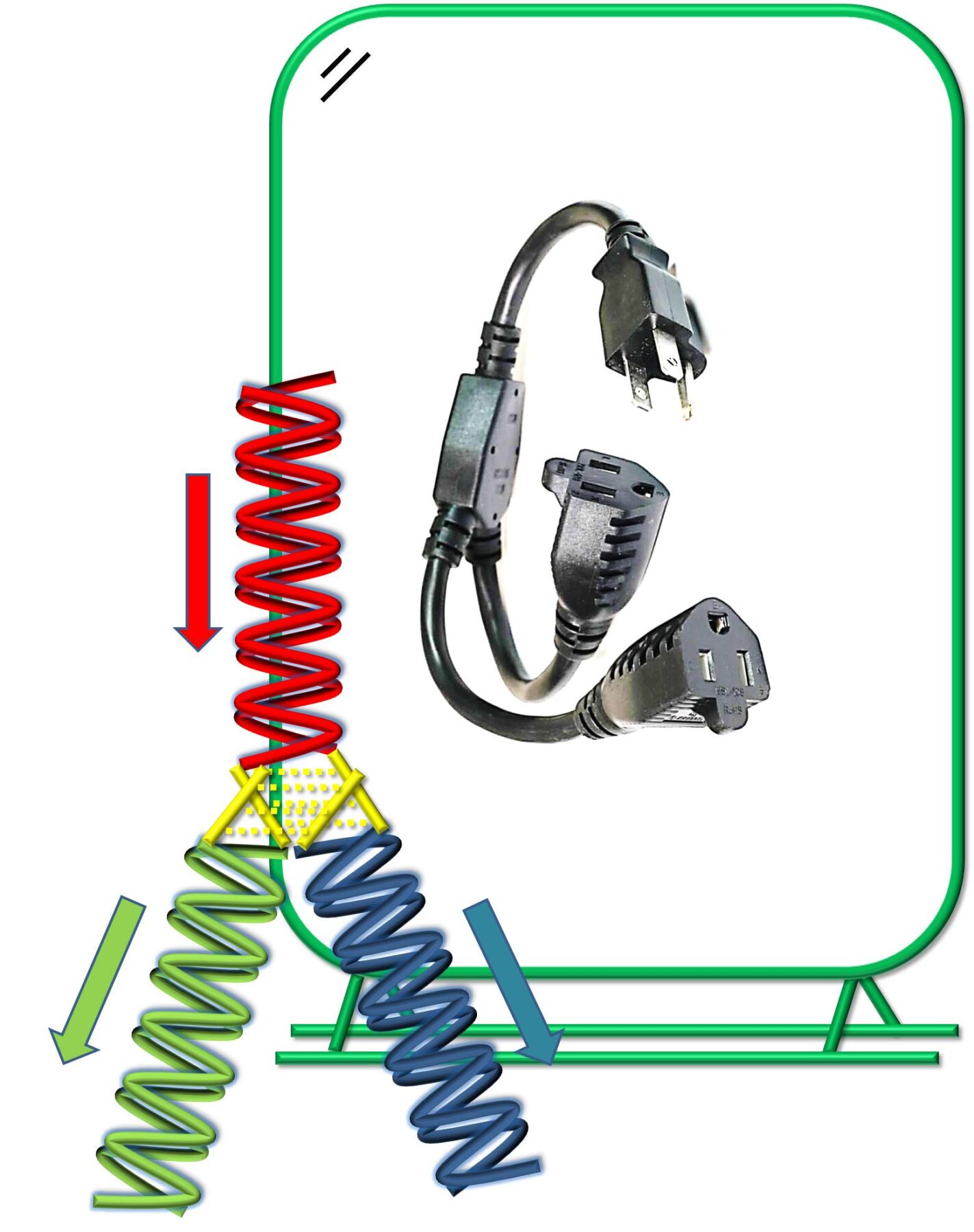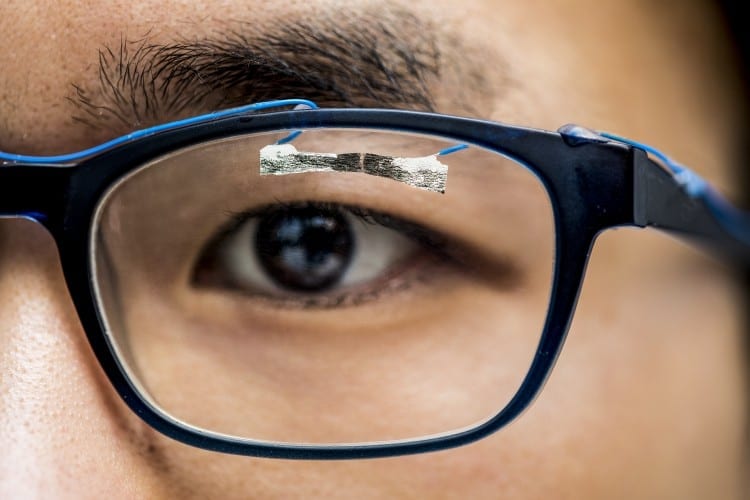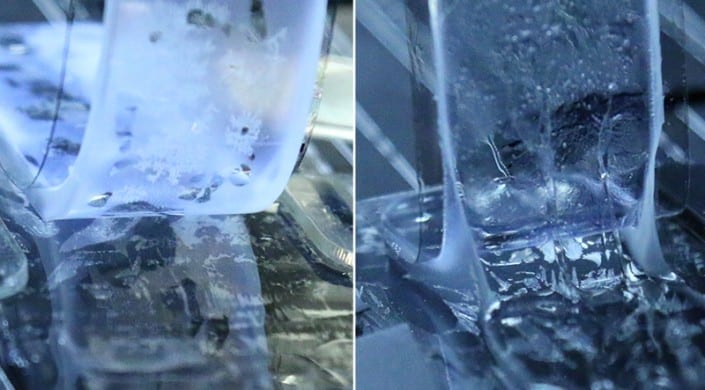
Graphic by Limin Xiang
Researchers at Arizona State University, in collaboration with NYU and Duke University, have recently designed, created and tested a DNA circuit capable of splitting and combining current, much like an adapter that can connect multiple appliances to a wall outlet.
For sheer versatility, there’s no molecule quite like DNA. The iconic double-helix carries the genetic blueprint for living forms ranging from single-celled organisms to human beings.
Recently, researchers have found that DNA’s remarkable properties of self-assembly and its ability to conduct electrical charge over considerable distance make it ideally suited for myriad applications, including tiny electronic circuits and computing devices, nanorobots and new advances in photonics.
Researchers at Arizona State University, in collaboration with NYU and Duke University, have recently designed, created and tested a DNA circuit capable of splitting and combining current, much like an adapter that can connect multiple appliances to a wall outlet.
“DNA is capable of conducting charge, but to be useful for nanoelectronics, it must be able to direct charge along more than one path by splitting or combining it. We have solved this problem by using the guanine quadruplex (G4) in which a charge can arrive on a duplex on one side of this unit and go out either of two duplexes on the other side” says Peng Zhang, an assistant research professor of chemistry at Duke University and a co-author of the new study.
“This is the first step needed to transport charge through a branching structure made exclusively of DNA. It is likely that further steps will result in successful DNA-based nanoelectronics that include transistor-like devices in self-assembling ‘pre-programmed’ materials,” Zhang says.
For details: biodesign.asu.edu
The Latest on: DNA-based nanoelectronics
[google_news title=”” keyword=”DNA-based nanoelectronics” num_posts=”10″ blurb_length=”0″ show_thumb=”left”]
via Google News
The Latest on: DNA-based nanoelectronics
- Patitz Awarded NSF Grant for Research on DNA-Based Nanostructure Researchon May 1, 2024 at 10:15 pm
Matthew Patitz, associate professor, plans to construct nanoscale structures using DNA sequences designed to fold into elongated slats that then form complex geometries.
- Unraveling the roles of non-coding DNA explains childhood cancer’s resistance to chemotherapyon May 1, 2024 at 11:59 am
“The end goal is to understand the mechanisms of drug resistance so we can develop novel therapeutics and optimize existing chemotherapies based on the individual’s unique genetic makeup.” Sorting ...
- Man Does DNA Test, Not Prepared For What Comes Back 'Unusually High'on April 30, 2024 at 2:13 am
The designer's genetic profile showed an astonishing amount of Neanderthal DNA, which has captured the attention of millions online—and a scientist.
- Applied DNA Awarded Contract by HDT Bio For Rapid Vaccine Development Programon April 25, 2024 at 6:24 am
Under the terms of the contract, Applied DNA will supply Linea™ DNA IVT templates to HDT Bio for use in conjunction with its LION™ formulated repRNA (self-replicating RNA) vaccination platform. The ...
- Applied DNA Announces 1-For-20 Reverse Stock Spliton April 22, 2024 at 12:25 pm
Applied DNA Sciences, Inc. (NASDAQ:APDN) (Applied DNA or the Company), a leader in PCR-based DNA technologies, today announced that it will effect a 1-for-20 stock split of its common stock, to be ...
- DNA Methylation News and Researchon April 20, 2024 at 5:00 pm
The performance of a blood-based testing method that uses cell-free deoxyribonucleic acid (DNA) to screen for colorectal cancer. Participants in the Framingham Heart Study who achieved higher ...
- Top 8 Best DNA Test Kits in 2024on April 20, 2024 at 5:00 pm
While some companies claim to offer DNA-based weight loss plans, there is little scientific evidence to support these claims. If you’re looking to lose weight, it’s best to consult with a ...
- Decoding dog DNA testson April 17, 2024 at 3:27 pm
So test results can still vary from company to company. “To determine breed ancestry of a given dog based on their DNA, Embark uses a proven scientific process that compares a dog’s DNA to the ...
- Neuroscientists Discover Shapeshifting DNA Controls Memory Formationon April 17, 2024 at 9:16 am
Based on this, the researchers hypothesized that the DNA itself was responding to the learning experience, switching genes on and off to facilitate the formation of memories. "This process is ...
- A urine-based test that detects tumor DNA fragments could offer early reliable screening for head and neck canceron April 15, 2024 at 5:00 pm
Citation: A urine-based test that detects tumor DNA fragments could offer early reliable screening for head and neck cancer (2024, April 16) retrieved 27 April 2024 from https://medicalxpress.com ...
via Bing News











